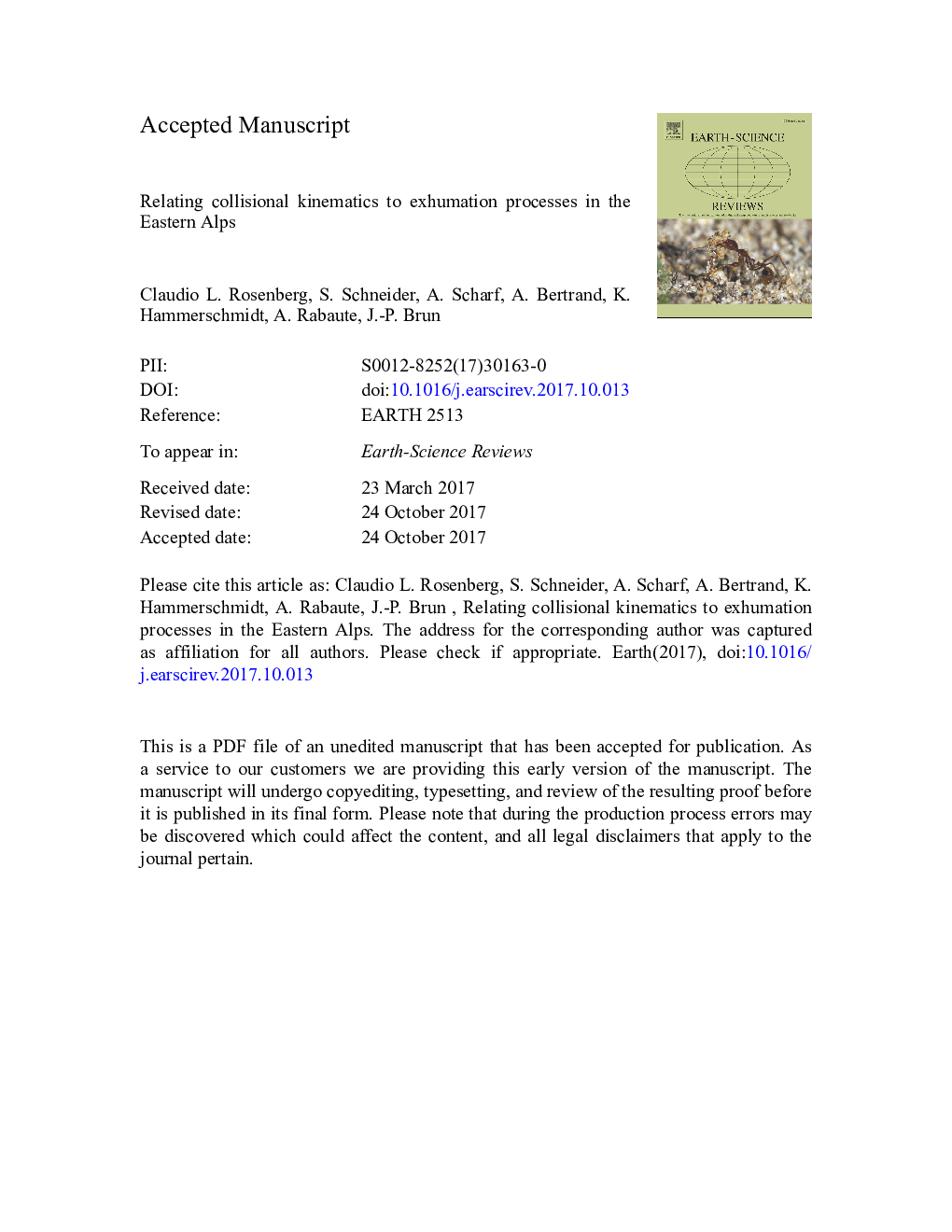| Article ID | Journal | Published Year | Pages | File Type |
|---|---|---|---|---|
| 8913112 | Earth-Science Reviews | 2018 | 126 Pages |
Abstract
Restorations to the pre-indentation stage, document an amount of northward increasing orogen-parallel extension, varying 45Â km to 85Â km, corresponding to 15% of extension, that is partly accommodated along normal faults. N-S shortening between the Northern Calcareous Alps and the Dolomites Indenter attained 75Â km in the west and decreased to 30Â km in the east. 55Â km out of these 75 were accommodated in the area of the Tauern Window. Our kinematic model shows that lateral extrusion accommodated along conjugate strike-slip faults requires large amounts of north-south shortening in the western part of the Eastern Alps. Such shortening is consistent with the reconstructed upright folding and erosion of the Tauern Window, thus explaining the largest amount of its exhumation. In contrast, the eastern termination of the Eastern Alps represents an area where collisional convergence was barely accommodated by crustal thickening. This transition from a highly shortened, thickened and exhumed wedge in the west, mainly affected by orogen-perpendicular displacements, to a barely shortened and exhumed wedge in the east, mainly characterised by orogen-parallel displacements, spatially coincides with a change in the deep structure of the European slab. Indeed, the inferred continental, European Slab, imaged in the west disappears into a low velocity anomaly, where no slab is detected in the east. An inherited step in the geometry in map view of the European passive margin, causing its crust to enter the subduction zone earlier than the area east of the Tauern Window, may explain the rapid decrease of shortening, of thickening, the different syn-collisional P-T gradients, and the disappearance of the continental slab east of the Katschberg Fault.
Related Topics
Physical Sciences and Engineering
Earth and Planetary Sciences
Geology
Authors
Claudio L. Rosenberg, S. Schneider, A. Scharf, A. Bertrand, K. Hammerschmidt, A. Rabaute, J.-P. Brun,
